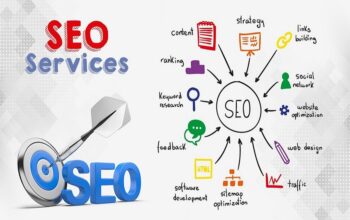In today’s digital landscape, where competition is fierce and consumer behavior is constantly evolving, businesses must leverage every tool available to maximize their online presence and profitability.
Search Engine Marketing (SEM) has emerged as a cornerstone of digital marketing strategies, enabling companies to not only increase visibility but also drive targeted traffic and generate valuable leads. With the right approach, SEM can significantly enhance your return on investment (ROI), making it an essential focus for businesses of all sizes.
However, achieving success in SEM is not merely about investing in paid ads; it requires a strategic blend of keyword research, compelling ad copy, optimized landing pages, and continuous performance analysis.
Moreover, partnering with professional SEM services and collaborating with a proficient content agency can provide a competitive edge in this fast-paced environment. As companies in Singapore and beyond seek to enhance their visibility through effective SEO practices, understanding the nuances of SEM becomes crucial.
This article will explore how businesses can maximize ROI through effective SEM campaigns, delving into best practices, innovative strategies, and the integration of content marketing and lead generation techniques. By implementing these strategies, companies can unlock the full potential of their SEM efforts, driving sustained growth and profitability.
Understanding SEM and Its Importance
SEM encompasses a variety of techniques and strategies aimed at increasing a website’s visibility in search engine results pages (SERPs). This primarily includes paid advertising, such as pay-per-click (PPC) ads on platforms like Google Ads and Bing Ads. However, SEM also interacts closely with SEO (Search Engine Optimization), which focuses on organic search traffic.
Effective SEM campaigns can yield significant benefits. First, they increase visibility; paid search ads ensure that your business appears at the top of search results, leading to higher click-through rates. Additionally, SEM allows you to target specific demographics, interests, and keywords, attracting users who are actively searching for your products or services.
Another advantage of SEM is its measurability. Unlike many traditional marketing methods, SEM provides clear metrics for evaluating campaign performance, allowing for adjustments and optimization in real time. Ultimately, effective SEM campaigns can drive more qualified leads to your website, boosting conversion rates.
To achieve maximum ROI from SEM, businesses must implement strategic planning and execution. Below, we will delve into various strategies and best practices for optimizing SEM campaigns.
Define Clear Objectives
Before launching any SEM campaign, it is essential to define clear and measurable objectives. Consider what you aim to achieve with your SEM efforts. Common objectives might include increasing website traffic, boosting lead generation, enhancing brand awareness, or driving sales or conversions.
Defining specific KPIs (Key Performance Indicators) linked to these objectives will help measure success. For instance, if your goal is lead generation, you might track metrics such as the number of form submissions, demo requests, or sign-ups. By establishing clear objectives from the start, you can align your SEM strategies with your overall business goals.
Utilize Professional SEM Services
Partnering with professional SEM services can significantly enhance your campaign’s effectiveness. These services typically encompass various aspects of SEM, including keyword research, ad creation and management, and performance analysis.
Expert SEM professionals conduct in-depth keyword research to identify high-performing keywords relevant to your business, which helps you attract the right audience. They create compelling ad copy that resonates with your target audience and encourages clicks while managing bidding strategies to optimize ad placements.
Furthermore, regular monitoring and analysis of campaign performance are crucial for understanding what’s working and what isn’t. SEM professionals can provide insights and recommendations for adjustments to maximize your ROI.
Focus on Keyword Research and Selection
Keyword research is at the heart of any successful SEM campaign. It involves identifying the terms and phrases potential customers use when searching for your products or services. Utilizing keyword tools like Google Keyword Planner, SEMrush, or Ahrefs can help you discover relevant keywords, assess their search volume, and evaluate competition.
Consider both short-tail and long-tail options when selecting keywords. Short-tail keywords are typically more competitive and may have higher search volumes, but they are also broader and less targeted.
In contrast, long-tail keywords tend to be less competitive and more specific, attracting users with higher intent. Balancing your keyword strategy with a mix of both types can help you reach a broader audience while still targeting specific leads effectively.
Incorporating local SEO elements is also crucial, particularly for businesses serving specific geographic areas. For example, if you are in Singapore, including keywords such as “SEO Singapore” in your campaigns can help attract local customers. This localized approach enhances your chances of connecting with users who are actively seeking your services in your area.
Craft Compelling Ad Copy
Once you have identified your target keywords, the next step is to create compelling ad copy that drives clicks and conversions. Your ad copy should be clear, concise, and engaging. Highlight your unique selling propositions (USPs) and make sure to include a strong call to action (CTA).
The CTA is a critical component of your ad. It guides users on what to do next, whether it’s “Sign up now,” “Learn more,” or “Get a Free Quote.” Using urgency in your ad copy, such as “Limited Time Offer,” can also encourage immediate action from potential customers.
A/B testing different versions of your ad copy can help you identify what resonates best with your audience. By testing variations in headlines, descriptions, and CTAs, you can refine your messaging to maximize engagement and conversion rates.
Optimize Landing Pages for Conversions
While compelling ad copy drives clicks, your landing pages must effectively convert those clicks into leads or sales. A well-optimized landing page is crucial for maximizing ROI in SEM campaigns.
Ensure your landing pages are relevant to the ad content, providing users with exactly what they expect upon clicking the ad. If your ad promotes a specific product or service, the landing page should deliver detailed information about it, along with persuasive content that encourages users to take action.
The layout and design of your landing page also matter. A clean, visually appealing page with easy navigation can enhance the user experience. Minimize distractions by eliminating unnecessary elements, and focus on guiding users toward your desired conversion action, whether that’s filling out a form, making a purchase, or signing up for a newsletter.
Incorporate trust signals, such as testimonials, reviews, or security badges, to build credibility with potential customers. Trust signals can reassure users that your business is legitimate and that they are making a safe choice by providing their information or making a purchase.
Implement Tracking and Analytics
To maximize the effectiveness of your SEM campaigns, it is essential to implement tracking and analytics. Tools like Google Analytics and Google Ads provide valuable insights into user behavior, campaign performance, and conversion rates.
By tracking key metrics such as click-through rates (CTR), conversion rates, and cost per conversion, you can identify areas for improvement. Regularly analyze your data to understand which keywords, ads, and landing pages are performing well and which ones may need adjustments.
Incorporating UTM parameters into your campaign links can help you track the source of your traffic more effectively. This will provide deeper insights into how users interact with your website, allowing you to make data-driven decisions to optimize your campaigns.
Test and Optimize Campaigns Continuously
Continuous testing and optimization are essential for maintaining high ROI in SEM campaigns. The digital landscape is ever-changing, and what works today may not be effective tomorrow. Regularly assess and refine your strategies based on the data you collect.
A/B testing, as mentioned earlier, should be a routine practice for your ads and landing pages. Additionally, experiment with different bidding strategies, ad placements, and targeting options to find the best combination that yields maximum results.
Monitoring your competitors’ activities can also provide valuable insights. Analyzing their ads, keywords, and overall strategy can help you identify gaps and opportunities in your campaigns. By staying informed about industry trends and shifts, you can adapt your strategies proactively.
Leverage Retargeting and Remarketing
Retargeting and remarketing are powerful techniques for maximizing ROI in SEM campaigns. These strategies allow you to reach users who have previously interacted with your website but did not convert.
By displaying targeted ads to these users as they browse other sites, you can remind them of your products or services and encourage them to return to your site. Retargeting can significantly increase conversion rates by keeping your brand top-of-mind for potential customers.
Create tailored ads specifically for retargeting campaigns to resonate with users based on their previous interactions. For example, if a user viewed a specific product but did not complete the purchase, you can show them ads for that product, potentially offering a discount or incentive to encourage conversion.
Integrate SEM with Content Marketing
Integrating SEM with content marketing strategies can further enhance the effectiveness of your campaigns. A content agency can help create valuable and engaging content that aligns with your SEM efforts.
High-quality content can improve your organic search rankings and increase brand authority, making your SEM ads more effective. For instance, creating informative blog posts or articles related to your products or services can help capture organic traffic, ultimately complementing your paid search efforts.
Consider using content marketing to build lead generation funnels. Offering downloadable resources, such as eBooks or whitepapers, in exchange for contact information can help you capture leads and nurture them through email marketing campaigns. By integrating SEM with content marketing, you create a cohesive strategy that maximizes your ROI across channels.
Monitor Industry Trends and Adapt
The digital marketing landscape is constantly evolving, with new trends and technologies emerging regularly. To maximize ROI from your SEM campaigns, it is essential to stay updated on industry trends and adapt your strategies accordingly.
For instance, voice search optimization is becoming increasingly important as more users turn to voice-activated devices for search queries. Adjusting your keyword strategy and ad copy to accommodate voice search can enhance your campaign’s relevance and effectiveness.
Additionally, consider incorporating automation tools into your SEM campaigns. Automated bidding strategies and ad management platforms can help streamline your efforts, freeing up time to focus on higher-level strategy and optimization.
Conclusion
Maximizing ROI from SEM campaigns requires a strategic approach that encompasses clear objectives, professional SEM services, in-depth keyword research, compelling ad copy, and ongoing optimization.
By focusing on these key areas and integrating SEM with content marketing and lead generation strategies, businesses can significantly enhance their online visibility, attract qualified leads, and drive conversions.
With the right combination of SEM services, a commitment to continuous testing and optimization, and an understanding of industry trends, businesses can achieve remarkable results.
As you implement these strategies, remember that successful SEM campaigns are not just about spending money on ads; they are about creating value for your customers and building lasting relationships that drive growth.




